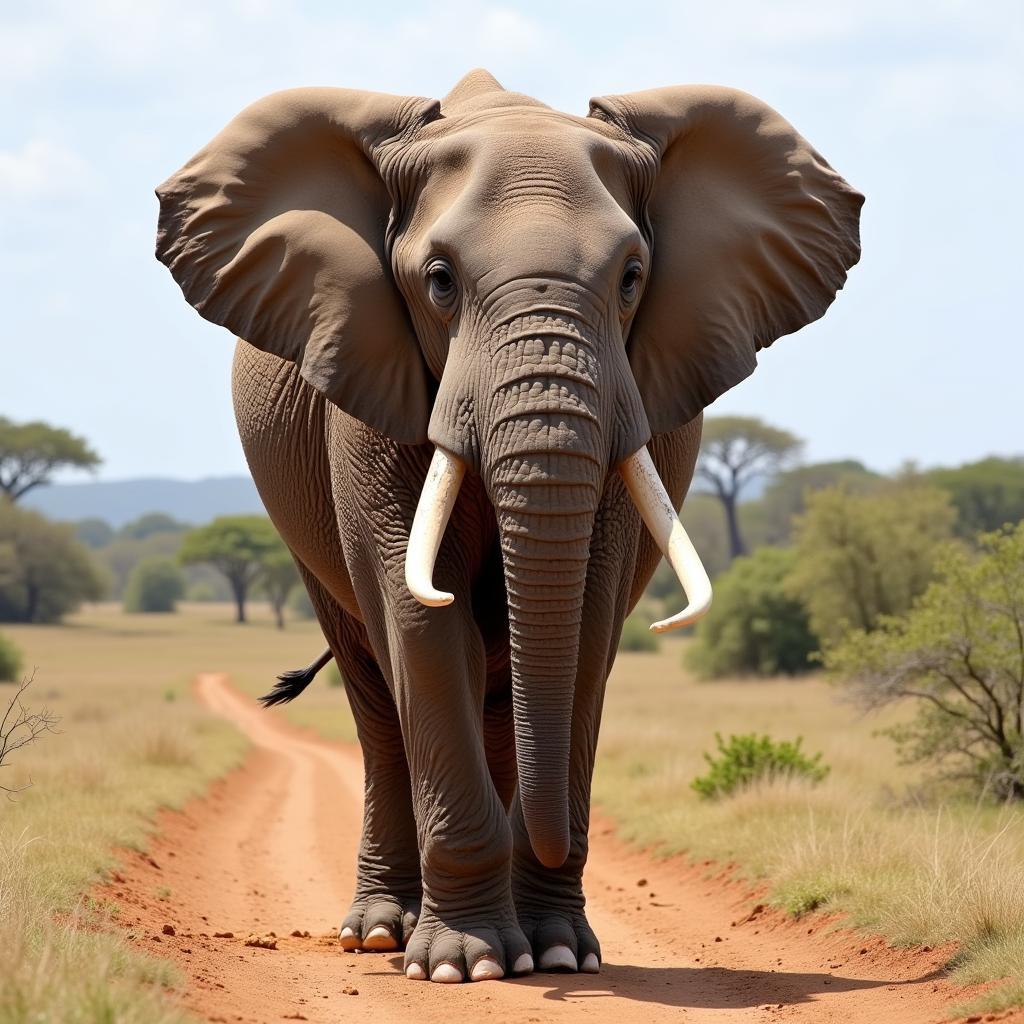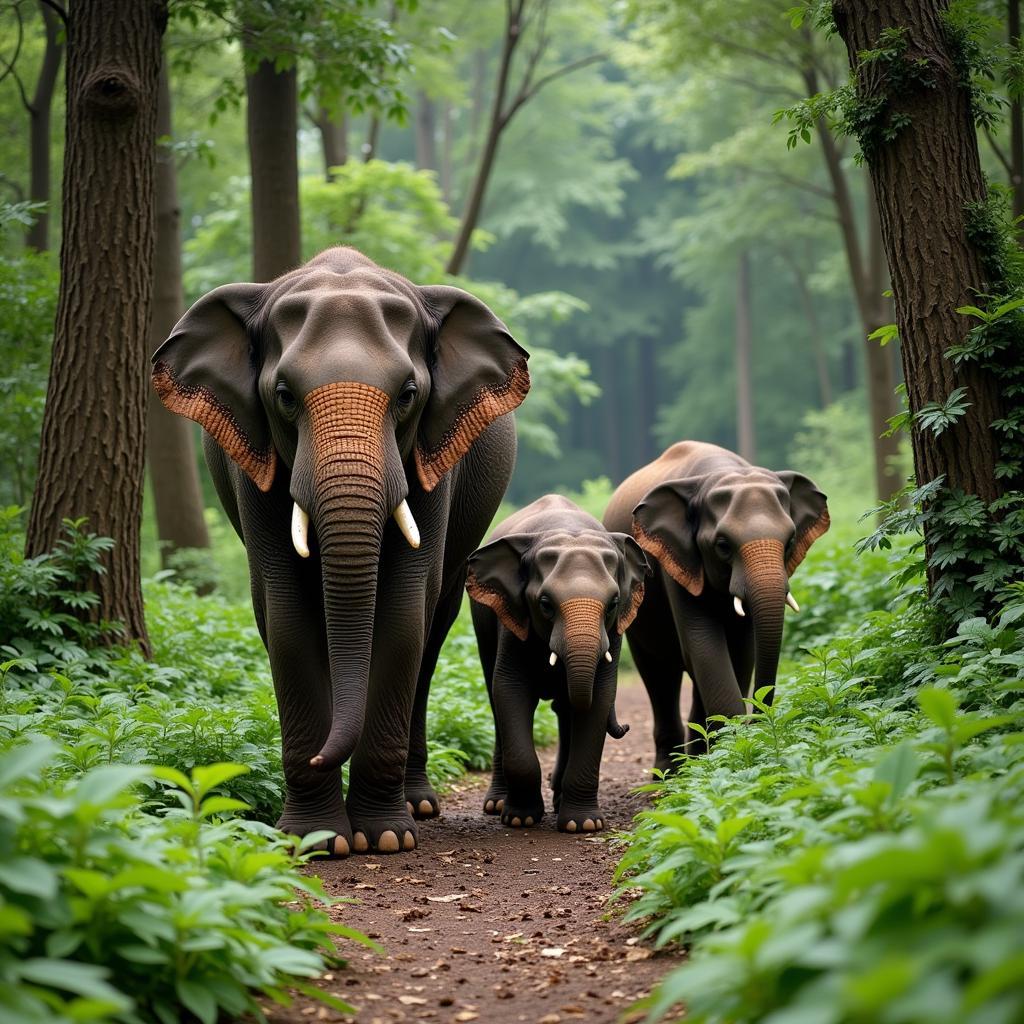African savannas and Asian forests echo with the rumbles of two of the world’s most iconic giants: the African elephant and the Indian elephant. These majestic creatures, though similar in their grandeur, harbor distinct characteristics that set them apart. This exploration delves into the fascinating differences between Indian elephants and African elephants, unveiling the unique beauty and power of each species.
A Tale of Two Trunks: Physical Distinctions
The most striking difference between the two species lies in their physical appearance. African elephants,  African Elephant Size, are significantly larger than their Asian counterparts. Males can reach a towering shoulder height of up to 3.3 meters (11 feet), dwarfing the largest Indian elephants, which typically stand at around 2.7 meters (9 feet).
African Elephant Size, are significantly larger than their Asian counterparts. Males can reach a towering shoulder height of up to 3.3 meters (11 feet), dwarfing the largest Indian elephants, which typically stand at around 2.7 meters (9 feet).
Their ears also tell a tale of two continents. African elephants sport large, fan-shaped ears that resemble the African continent itself. These ears play a crucial role in thermoregulation, acting as radiators to dissipate heat in the scorching African sun.
Indian elephants, on the other hand, have smaller, more rounded ears that are better suited for the cooler climates of their Asian habitats. Their heads also differ, with African elephants possessing a concave forehead compared to the convex, double-domed forehead of Indian elephants.
Perhaps the most distinguishing feature is the presence of tusks. While both male and female African elephants boast impressive ivory tusks, only some male Indian elephants develop these elongated incisors. This difference in tusk distribution reflects variations in social structures and mating behaviors between the two species.
Beyond the Surface: Habitat and Diet
The geographical divide between these elephant species has shaped their evolutionary paths, leading to adaptations tailored to their respective environments. African elephants roam the savannas, grasslands, and rainforests of sub-Saharan Africa, thriving in a variety of habitats. Their diverse diet consists of grasses, leaves, fruits, and bark, which they gather using their powerful trunks and tusks.
Indian elephants,  Indian Elephant Forest Habitat, primarily inhabit the grasslands, deciduous forests, and rainforests of South and Southeast Asia. Their diet is similarly herbivorous, encompassing grasses, bamboo, fruit, and bark.
Indian Elephant Forest Habitat, primarily inhabit the grasslands, deciduous forests, and rainforests of South and Southeast Asia. Their diet is similarly herbivorous, encompassing grasses, bamboo, fruit, and bark.
Social Structures and Family Ties
Both African and Indian elephants are highly social animals, living in complex family groups led by experienced matriarchs. However, the size and composition of these groups differ between the species. African elephant herds are typically larger, comprising up to 100 individuals, while Indian elephant herds are smaller, usually consisting of 6 to 20 individuals.
Conservation Challenges and Hope for the Future
Both African and Indian elephants face mounting threats to their survival, primarily due to habitat loss, human-wildlife conflict, and poaching for their ivory. Conservation efforts are underway across their range countries to protect these magnificent creatures and ensure their continued existence for generations to come.
Conclusion
The comparison between Indian elephants and African elephants highlights the remarkable diversity within the animal kingdom. Despite their shared ancestry, these two species have evolved distinct physical and behavioral characteristics that reflect their unique ecological niches. Understanding and appreciating these differences fosters a deeper appreciation for the natural world and underscores the importance of conserving these magnificent creatures.
Leave a Reply